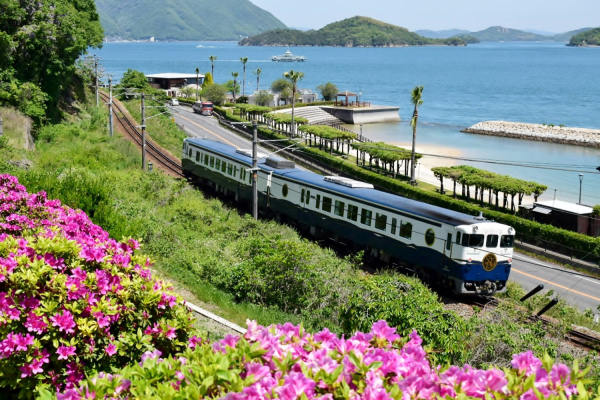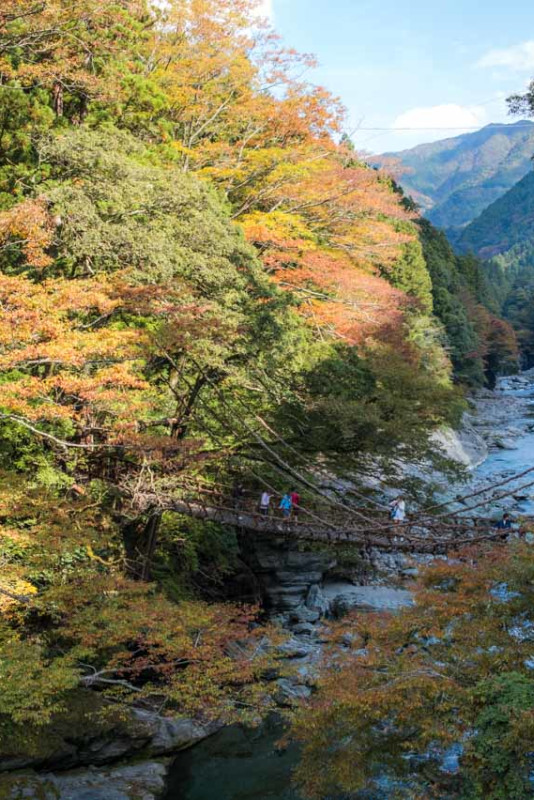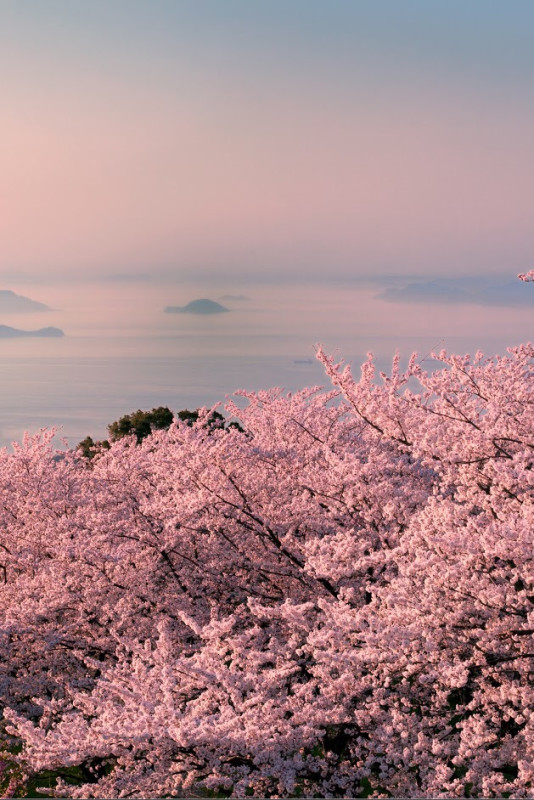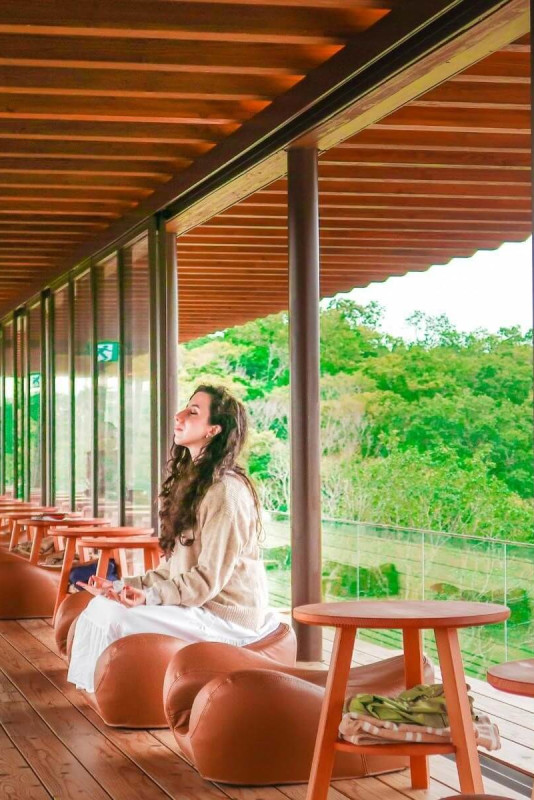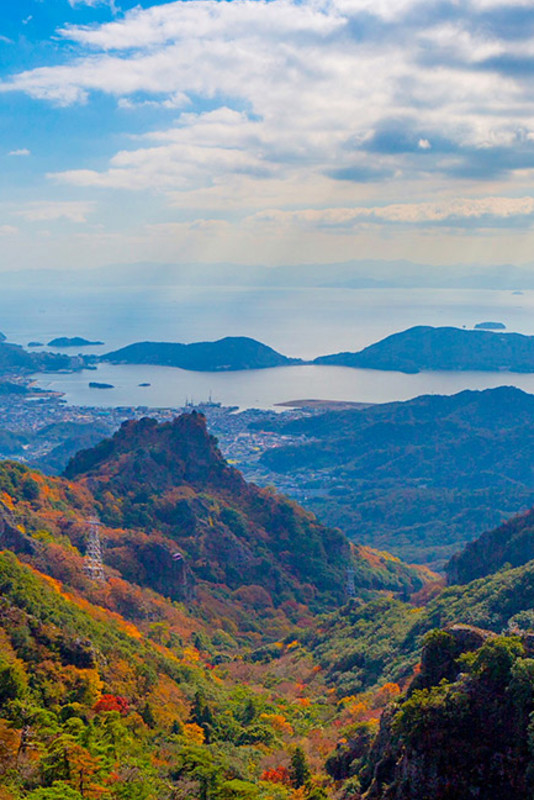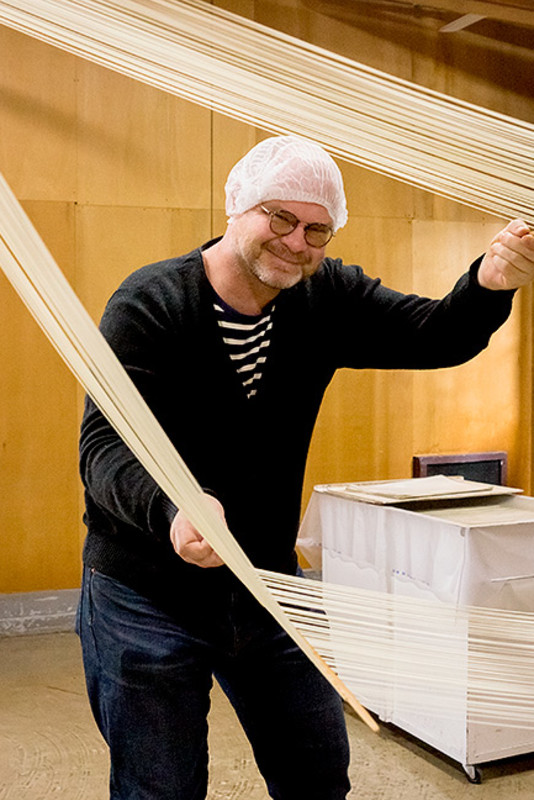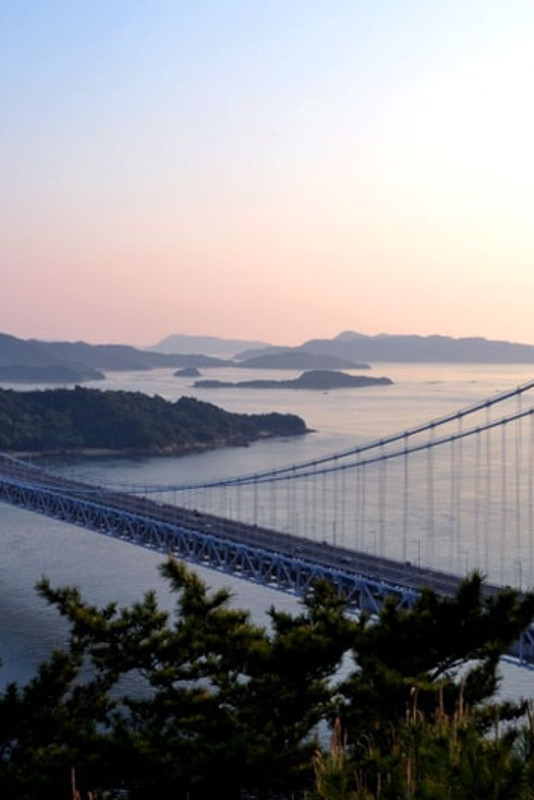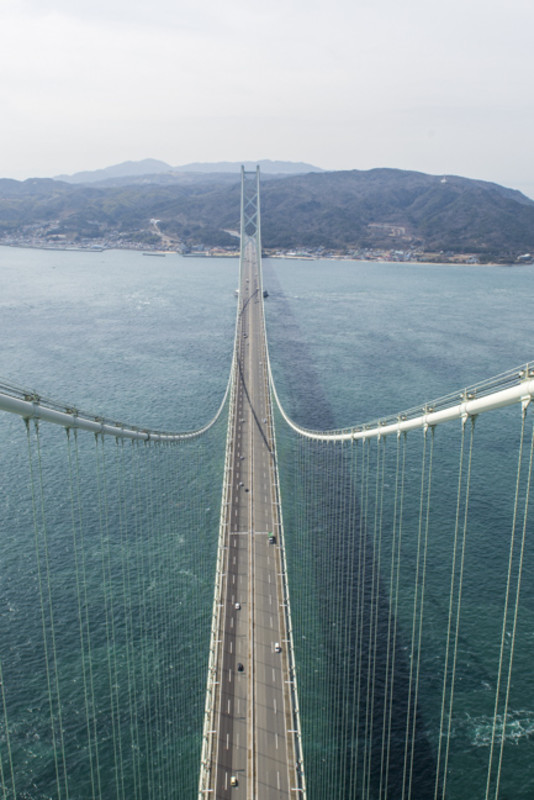Itineraries
A Crowd-free Journey through the History of Western Setouchi in Yamaguchi, Hiroshima and Ehime

In addition to the World Heritage Sites of Hiroshima and Miyajima, this four-day itinerary includes visits to, undiscovered, repositories of feudal history and ancient onsen hot spring resorts in Yamaguchi and Ehime.
- Day 1
- Yamaguchi and Yuda Onsen
Travel: Osaka to Yuda Onsen
・Take the Shinkansen from Shin-Osaka Station to Shin-Yamaguchi Station (Approx 2 hours)
・Take the local train from Shin-Yamaguchi Station to Yamaguchi Station (Approx 15-30 minutes)
Yamaguchi: The Kyoto of the West
While now a comparative backwater, from the 14th to the 16th centuries, Yamaguchi was one of the most prosperous cities in Japan. Modeled after Kyoto, it has long been long known as “The Kyoto of the west” and vestiges of this golden era which you can often have almost to your self remain.
Rurikoji Temple’s five-storied pagoda (under restoration until autumn 2025) is a national treasure and dates from 1442. Among its various treasures is Japan’s oldest copy of the written record of the teachings of Dogen, and founder of the Soto sect of Zen Buddhism. Yamaguchi’s association with Zen is strong and many historic Zen temples are found here. At Gensaiji Temple you can experience elements of Zen practice under the guidance of the temple’s English-speaking master. The garden at Joeji Temple is about 500 years old and was designed by the famous artist and zen monk Sesshu. Yamaguchi’s Zen legacy is also a boon for vegetarian travelers who can dine on Shojin temple cuisine at Ryuzoji Temple in Yamaguchi and at Sansuien in Yuda Onsen (reservations required).
Ichinosaka River and Kawara Soba
The banks of the Ichinosaka River are a very pleasant place for a stroll. Cherry trees grow along the riverbanks and hang over the flowing water, heavy with pretty blossoms during the spring. Check out the small boutiques and cafes and be sure to try one of Yamaguchi’s culinary specialities, kawara-soba, green tea-flavored buckwheat soba noodles served on a traditional roof tile) at Kawarasoba Yanagiya.
About 30 minutes by car from Yamaguchi City is Hofu Tenmangu Shrine, dedicated to scholar-poet Sugawara No Michizane, posthumously known as Tenjin. Hofu Tenmangu is considered to be one of the three most important of the 12,000 Tenmangu Shrines in Japan and is a particularly popular place for students to visit to pray for academic success. It is particularly pretty during the early spring plum blossom season. Off to the side of the long stone staircase that leads to the shrine is the delightful Hoshoan garden and tea house, where you can enjoy a relaxed and calming tea ceremony experience in lovely surroundings.
Yuda Onsen
Yuda Onsen is a small onsen area located very close to the center of Yamaguchi City that dates back to around the year 1200. There is a legendary tale that states the natural hot spring was first discovered when an injured white fox wandered into the springs and was healed.
There are several public ashiyu, hot springs in which to warm and relax your feet, in the town. At the chic, modern Kitsune-no-ashiato (Foxes Footprints) Cafe and Information Center, you can enjoy ashiyu both inside and in the garden, as well as coffee, deserts and local sake tasting sets.
Accommodation: Matsudaya Hotel
A hotel that has been around for over 300 years, when you step into Matsudaya Hotel you will feel like you have stepped back in time. The main building was built in the Taisho period and guests who stay in this building are also able to see the garden from their room. Meals are served in the guest rooms, providing privacy as guests dine on exquisitely prepared dishes using seasonal and local ingredients. A stay at this historical property is a must when visiting Yamaguchi City and the Yuda Onsen area.
URL: https://www.matsudayahotel.co.jp
- Day 2
- Iwakuni and Miyajima
Travel: Yuda Onsen to Iwakuni
・Take a local train from Yuda Onsen Station to Shin-Yamaguchi Station (Approx 20 minutes)
・Take the Shinkansen from Shin-Yamaguchi Station to Shin-Iwakuni Station (Approx 30 minutes)
・Take a local bus or taxi to Kintaikyo Bridge (Approx 15 minutes)
Kintaikyo, one of the most beautiful bridges in Japan
Kintaikyo Bridge in Iwakuni is a historic wooden bridge with five arches spanning the Nishiki River and is considered one of the most beautiful bridges in Japan. The original bridge was built in 1673 and while it has been damaged and washed away a few times, the integrity of the original design has been maintained. The shape and the location of Kintai Bridge have not changed in over 300 years.
As well as walking across the bridge, be sure to appreciate the intricate, and beautiful, woodwork from beneath too. The riverside here is particularly pretty during cherry blossom season, and, if your schedule allows you to linger until dusk, the bridge is illuminated most evenings of the year and displays of traditional cormorant fishing are conducted on summer evenings.
Kikko Park & Iwakuni Castle
Kintaikyo takes you into Kikko Park, which now occupies that area where the feudal lords of Iwakuni used to live. It is a lovely area to walk around, enjoying the preserved historical buildings and seasonal flowers which add color throughout the year. The Kashiwabara Art Museum, located next to the Iwakuni Castle Ropeway Station, contains an amazing collection of samurai swords and armor. One of Iwakuni’s more unusual attractions are its white snakes which are venerated as a guardian deity of households and can be seen in the White Snake Museum here. The ropeway whisks you up to Iwakuni Castle. Although the current keep is a reconstruction that dates only from 1962, the high vantage point offers a fantastic view of the Kintaikyo Bridge and the river below.
Iwakuni Sushi, Sake and Samurai Dress Up
On the other side of the bridge Honke Matsugane, a tourist information center where you can try on samurai armor, sample some local Iwakuni sake and local dishes. Everything is sample -size so you can try local cuisine and still have room for lunch or dinner. Be sure to try lotus root and Iwakuni Sushi. Iwakuni is known for its lotus fields which uniquely produce lotus root with nine rather than the usual eight holes). Iwakuni Sushi is a mix of rice, eggs, veggies, and seasonings that is pressed down until it kind of looks like a sushi cake.
Travel: Iwakuni to Miyajima
・Take a taxi (Approx 12 minutes) or local bus (Approx 30 minutes) from Kintaikyo Bridge to Iwakuni Station
・Take the train from Iwakuni Station to Miyajima-guchi Station (Approx 20 minutes)
・Take the ferry from Miyajima-guchi to Miyajima (Approx 10 minutes)
Explore the sacred island of Miyajima
A sacred site since time immemorial, originally built in its current form some 800 years ago, Itsukushima Shrine on the island of Miyajima is the first of two UNESCO World Heritage Site on this itinerary. The huge vermilion shrine gate which stands in the water is one of the most iconic sights in Japan. Be sure to check tide time on the day of your visit. The sight of Itsukushima Shrine and the “floating” shrine gate at high tide is one that will never be forgotten. Low tide offers the opportunity to walk out to see the towering shrine gate up close.
The area around the shrine is crowded with many ancillary temples and shrines which well-illustrate the long interconnected history of Buddhism and Shinto before separation was enforced in 1868. Overlooking Itsukushima Shrine is the impressively unfinished Senjyokaku 1000 Mat Pavilion and the Five-storied Pagoda which stands next to it. At the base of Mt. Misen (also part of the UNESCO World Heritage Site) is the fascinating Shingon Buddhist temple complex of Daishoin.
Kimono and culture workshops in a local temple
OKEIKO Japan offers opportunities to dress in authentic kimono and experience tea ceremony, calligraphy and even cooking, within the confines of a pretty temple.
URL: https://okeiko-japan.com/en
Eat your way around Miyajima
A big draw for visitors to Miyaima is the wide variety of restaurants and street food available. Local specialities such as plump grilled oysters, conger eel and maple leaf shaped Momiji-manju sweet bean cakes can be had along lively Omotesando, while a more relaxed vibe can be enjoyed on the quieter Machiya Street which runs parallel to Omotesando. Miyajima Brewery serves craft beer brewed on site with good views of the great shrine gate.
The joy of Miyajima after dusk
Staying overnight on Miyajima allows you to enjoy the serene tranquility of the island once the daytrippers leave. An evening stroll to view the great shrine gate, illuminated from dusk, is a wonderful way to end your day on this sacred isle.
Accommodation: Iwaso
A stay at Iwaso is a truly authentic ryokan experience. Originally established as a teahouse in 1854, it has become the go-to choice for dignitaries (Iwaso hosted the G7 leaders for dinner during the 2023 Hiroshima G7 Summit) and celebrities seeking a quiet retreat and old world charm while visiting Miyajima Island. Located at the entrance to Momijidani (Maple Valley), a short distance from both Itsukushima Shrine and the ropeway and hiking trails to Mt. Misen, Iwaso is the perfect place to stay to make the most of your time on the island. The service, discrete and efficient, is, as you would expect, top notch and the kaiseki meals, featuring local specialities such as oysters and conger eel are exceptional. As well as well-appointed tatami mat rooms, four private streamside cottages, each with its own unique history and design, are also available.
URL: http://www.iwaso.com/english/
- Day 3
- Hiroshima and Matsuyama
Travel: Miyajima to Hiroshima
・Take the local train from Hiroshima Station to Miyajima-guchi Station (Approx 30 minutes)
・Take the ferry from Miyajima-guchi to Miyajima (Approx 10 minutes)
World Heritage Sea Route
High speed ferries make the journey between Hiroshima’s two UNESCO World Heritage Sites in approximately 45 minutes. Hiroshima departures are from Peace Memorial Park, just south of the A-bomb Dome Memorial. Please check the website as schedules change according to the tides.
URL: http://www.aqua-net-h.co.jp/en/heritage/
Make a peace pilgrimage to the site of the world’s first A-bomb attack
Visiting Hiroshima’s Peace Memorial Park, Peace Memorial Museum and Atomic Bomb Dome Memorial World Heritage Site is a sobering and often emotional experience. If time allows, seek out a quiet spot among the trees to reflect on the experience before returning to the hustle and bustle of the city.
Travel: Hiroshima to Matsuyama
・Take a taxi from Hiroshima Peace Memorial Park to Hiroshima Port (Approx 15 minutes)
・Choose from the regular (Approx 2 hours 40 minutes) and high speed ferry (Approx 1 hour 10 minutes) to travel across the Seto Inland Sea to Matsuyama.
・Take the limousine bus to Matsuyama city center (Approx 20 minutes to Matsuyama Station and 45 minutes to Dogo Onsen)
Matsuyama
The ferry journey to Matsuyama, passing through Kure and the narrow Seto Strait, is a pleasure in itself. Try to opt for one of the five daily
Sea Paseo departures to enjoy the trip on one of the well appointed Sea Paseo cruisers.
Located on the western edge of Shikoku, Matsuyama is a city blessed with a host of cultural and historical landmarks waiting to be discovered. Start with a trip to the iconic Matsuyama Castle, an impressive hilltop castle with panoramic views of the city.
10 minutes by streetcar ride is Dogo Onsen – one of Japan’s oldest hot spring resorts and the inspiration for Studio Ghibli’s film Spirited Away. The original hot spring onsen is still in operation and open to the public. They also offer guided tours around the facility, including a look at the special bath constructed exclusively for the emperor’s private use. Next to the onsen, you can enjoy a glass of locally brewed Dogo Beer while soaking your feet in a foot bath.
Eclectic Ishiteji Temple is one of the 88 temples on the famous Shikoku Ohenro Pilgrimage route and is only a short distance from Dogo Onsen. As you go around Shikoku, you will undoubtedly spot pilgrims with their distinctive straw hats, white robes and walking stick trekking between temples. Visiting Ishiteji Temple is a way to experience a tiny part of this vast journey that attracts pilgrims from all over the world.
Accommodation: Yamatoya Besso
Nestled in the heart of Matsuyama, Yamatoya Besso is an elegant ryokan hotel steeped in Japanese tradition and hospitality. The ryokan's rooms are built entirely out of Japanese cypress creating a calming atmosphere. The attentive staff will welcome you and attend to your every need during your stay. You can also indulge in the culinary delights of Yamatoya Besso, where kaiseki meals are skillfully crafted with the finest local ingredients.
URL: https://yamatoyabesso.com
- Day 4
- Ozu and Uchiko
Travel: Matsuyama to Ozu
・Take a limited express train from Matsuyama Station to Ozu Station (Approx 35 minutes)
Iyonada Monogatari
URL: Iyonada Monogatari
Ozu Castle, Garyu Sanso and Tea, Ozu Castle Town and Pokopen Yokocho
Located in the south of Ehime Prefecture, Ozu is a charming castle town full of carefully preserved historical buildings. The beautifully reconstructed Ozu Castle stands on a hill by the Hijikawa River. Inside, you can explore exhibits on Ozu's history, which include displays of armor and artifacts from feudal Japan. The castle also famously offers overnight stays.
Garyu Sanso is an exquisite example of a traditional Japanese villa and garden. Furo-an, a tiny thatched-roof building located inside the garden and a favorite spot for photography enthusiasts, incorporates a living tree as one of its main pillars. Depending on the day of the week, Furo-an offers a special Japanese tea service.
Walk the streets of Ozu’s old town to connect with the past. Plenty of old merchant houses and samurai residences still stand in this picturesque town. Inside the old quarter, look out for the Pokopen Yokocho, a lively alley filled with retro memorabilia from the 1950s.
Washi Papermaking in Uchiko
A 15-min train ride to the east of Ozu is Uchiko, a historical town famous for its beeswax and paper production. Wander around the town’s historical preservation district to get a feel for life during its heyday over 100 years ago . Several places offer traditional washi paper making experiences, where visitors can learn about the process and create their own. wonderful souvenirs to take back home. The unique Ikazaki Kite Battle Festival is held here every May and the small but fun Ikazaki Kite Museum exhibits kites from around the world and offers kites to fly by the river free-of-charge.











































































